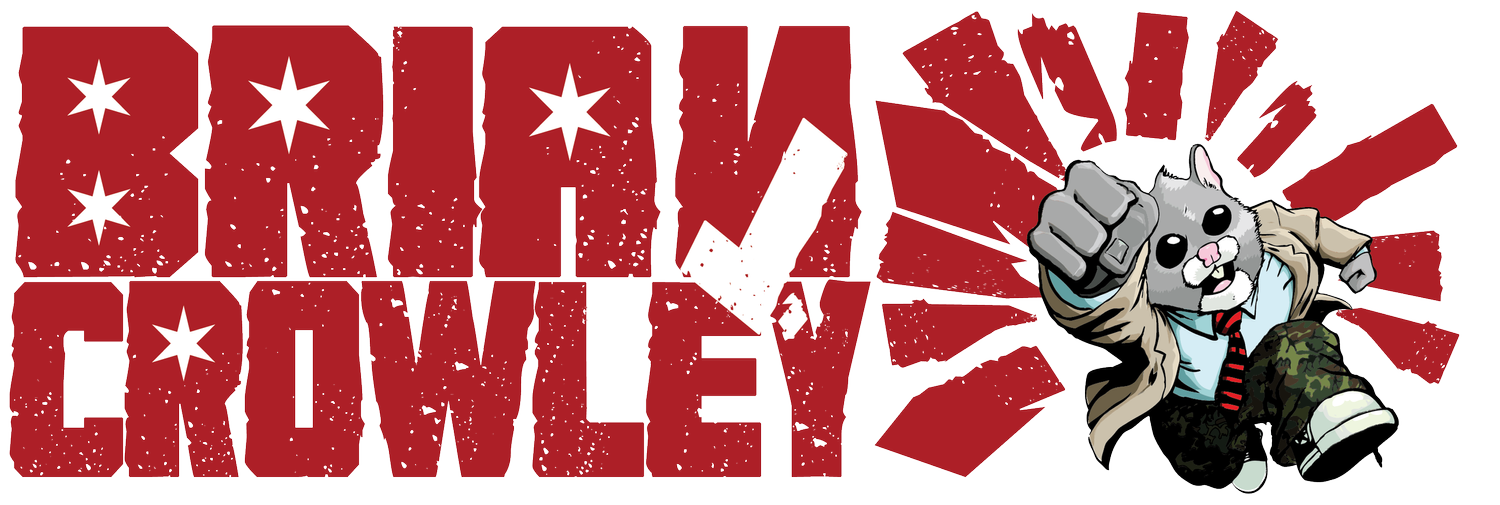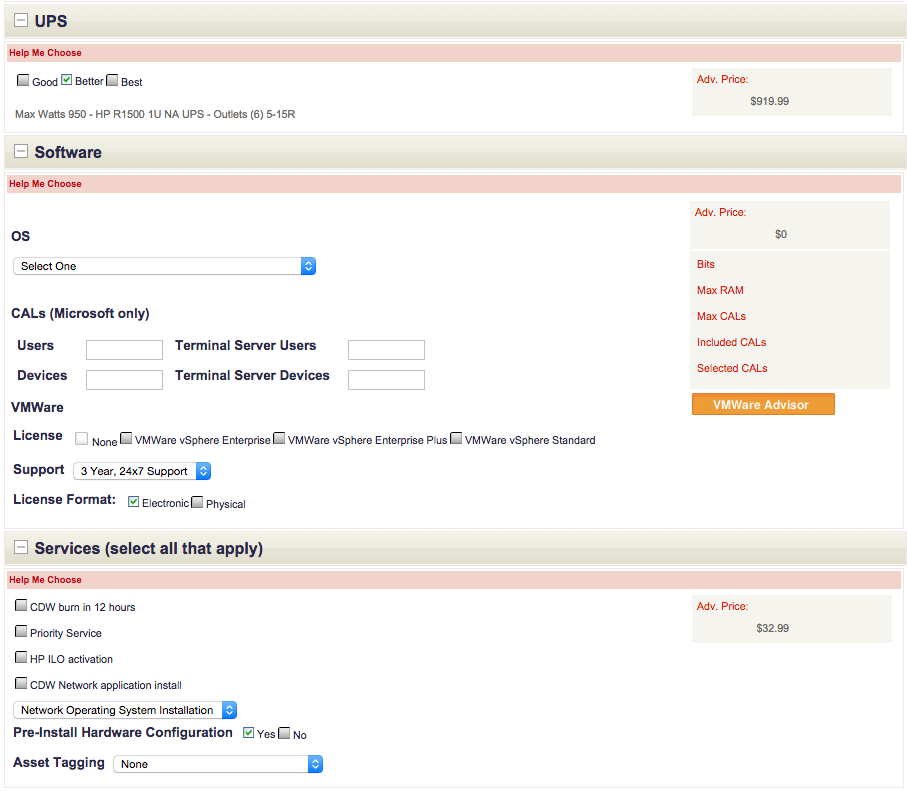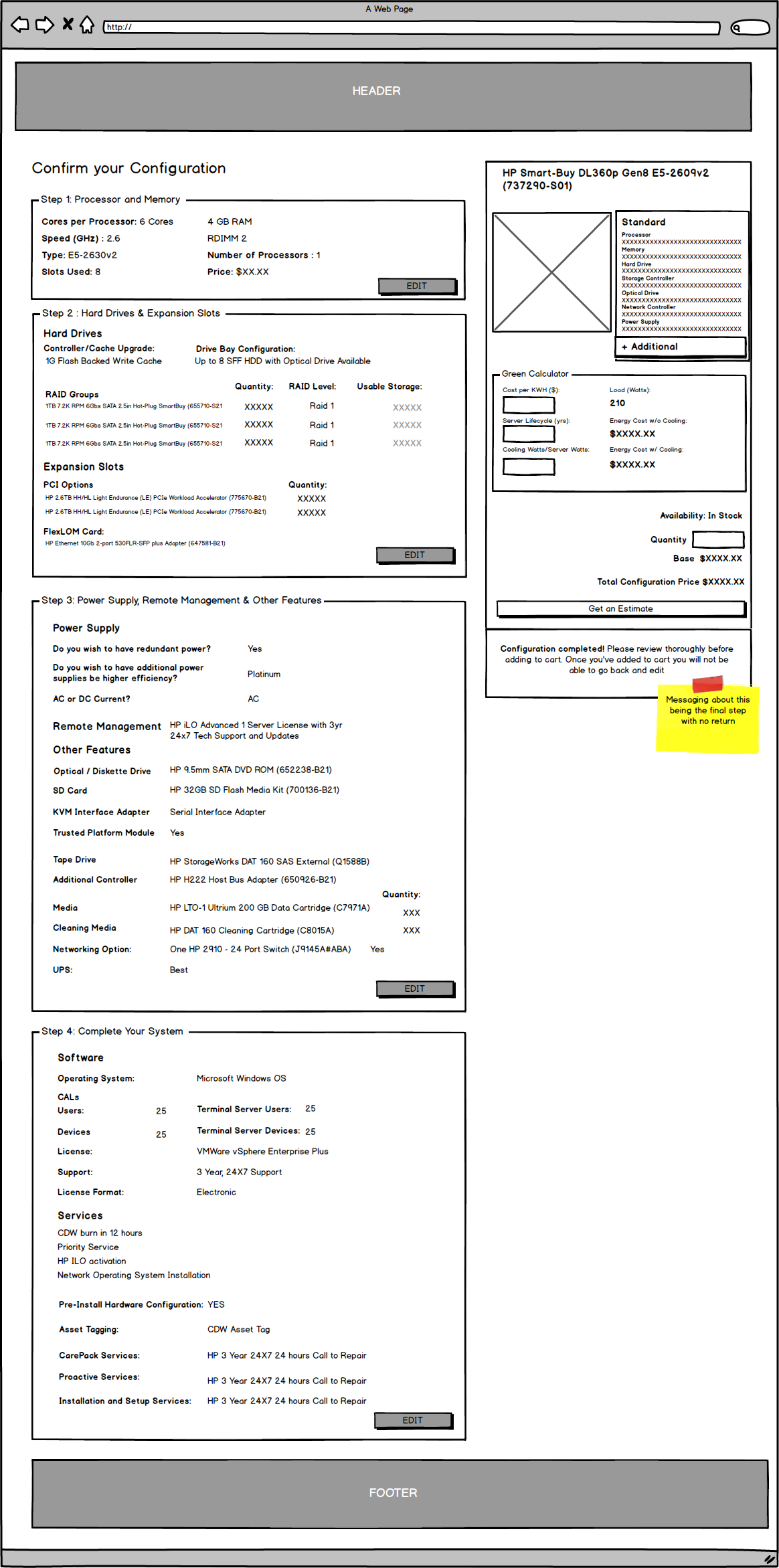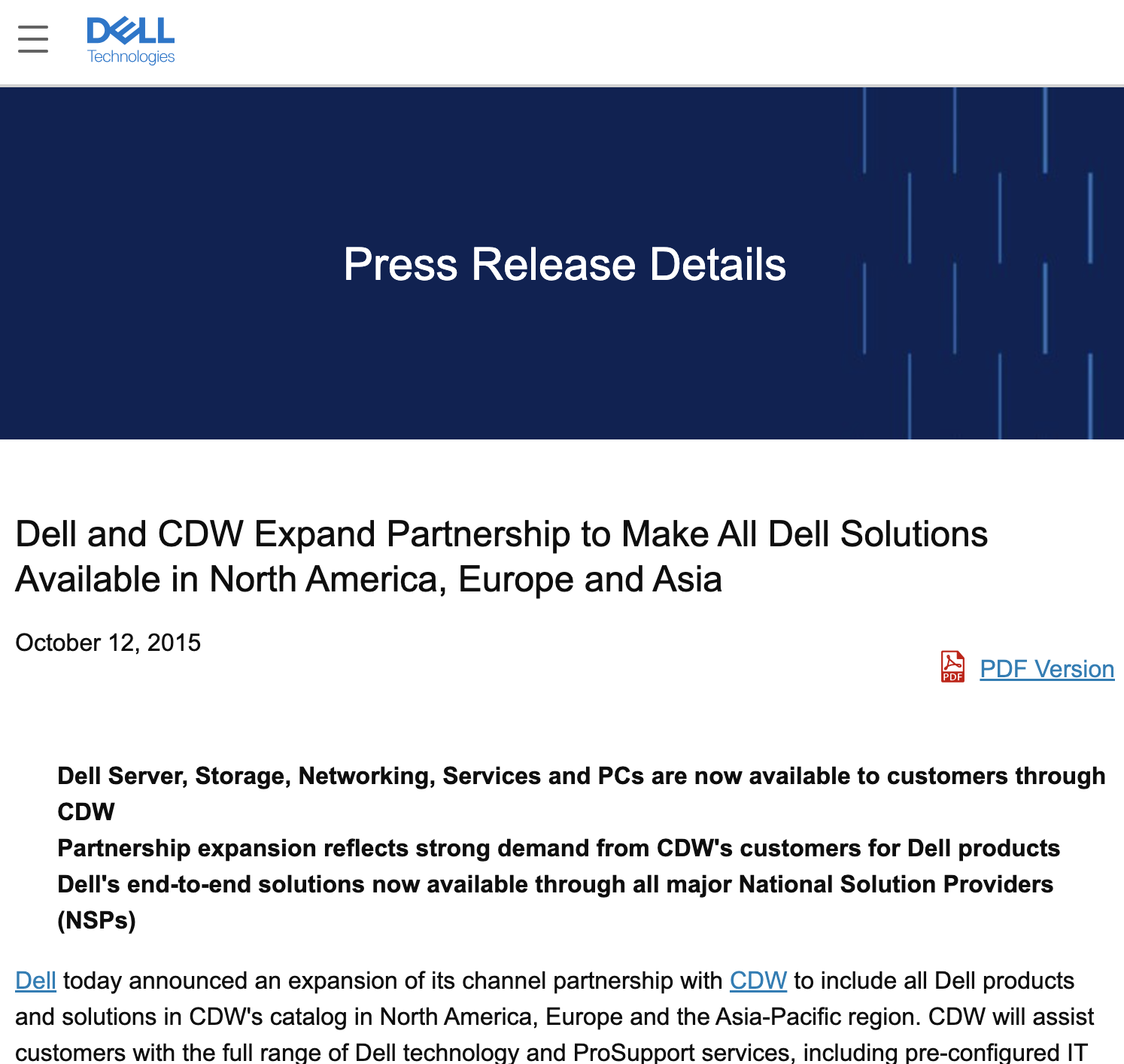How CDW Lost Hardware Business to Dell's Superior Tools
Situation
CDW was hemorrhaging hardware configuration business to Dell and other vendors because customers perceived CDW as a "virtual supply closet"—excellent for ordering known products but inadequate for configuring complex hardware solutions. Dell's sophisticated online configuration tools provided real-time compatibility checking, dynamic pricing updates, and guided product selection, while CDW's website forced customers to work with sales representatives for even basic configuration tasks. This limitation was particularly damaging in competitive enterprise scenarios where customers wanted to explore multiple options independently before engaging sales teams. Internal analysis revealed that CDW was losing an estimated 15-20% of potential hardware sales to competitors with superior self-service configuration capabilities.
A very rough screenshot of one of the vendor’s configurator tools that was a mere clone of Dell.
Task
Design and develop a hardware configuration tool that could rival Dell's market-leading capabilities while leveraging CDW's unique strengths in multi-vendor solutions and comprehensive services. The goal was to enable customers to configure complex hardware solutions independently while providing seamless handoffs to CDW's sales and professional services teams when needed. The solution needed to work across multiple vendor product lines and integrate with existing CDW systems for pricing, inventory, and customer data.
Action
I began with ethnographic research, spending extensive time inside CDW's internal configuration center observing how technical specialists and solutions architects built custom systems for enterprise customers. I interviewed systems engineers, configuration specialists, and solutions architects to understand their decision-making processes, the complexity of hardware compatibility requirements, and the business rules they applied when recommending configurations.
I conducted detailed user interviews with IT professionals who regularly configured servers, workstations, and networking equipment, learning about their existing workflows, preferred tools, and pain points with current solutions including Dell's configurator. This research revealed that users valued speed and accuracy over comprehensive options—they preferred guided experiences that eliminated incompatible choices rather than exhaustive product catalogs that required expert knowledge to navigate safely.
Working in close collaboration with the development team, I used shared Google documents to outline detailed technical requirements, map complex data relationships between products, and define integration points with existing CDW systems including inventory management, pricing engines, and customer accounts.
I created comprehensive wireframes in Balsamiq, heavily annotated with business logic, interaction specifications, and error handling scenarios that developers could implement without requiring extensive additional clarification or meetings.
The design strategy focused on progressive disclosure, beginning with basic system requirements and user intent, then gradually revealing configuration options in a logical sequence. I incorporated real-time compatibility checking, dynamic price updates, and live availability information to match user expectations established by other leading configuration tools while ensuring CDW's multi-vendor advantage remained prominent throughout the experience.
Result
We successfully launched a minimum viable product providing comprehensive server and workstation configuration capabilities across major vendors including Dell, HP, and Lenovo. Initial user feedback was overwhelmingly positive, with customers particularly appreciating the ability to explore configuration options independently while receiving expert guidance through the interface. Usage analytics showed strong engagement with average session durations of 12+ minutes and high progression rates through the configuration funnel.
The modular technical architecture we developed enabled rapid expansion to additional product categories and vendor partnerships, with each new integration requiring significantly less development effort than the original implementation. Sales teams reported a notable improvement in lead quality, with customers who used the configurator arriving at sales conversations with clearer technical requirements, more realistic budget expectations, and higher purchase intent. Most significantly, the project demonstrated CDW's capability to compete directly with vendor-specific configuration tools while maintaining the strategic advantages of multi-vendor expertise and comprehensive service offerings that differentiated CDW in the market.
This work was also a strategic play that help CDW and Dell finally start working together.






